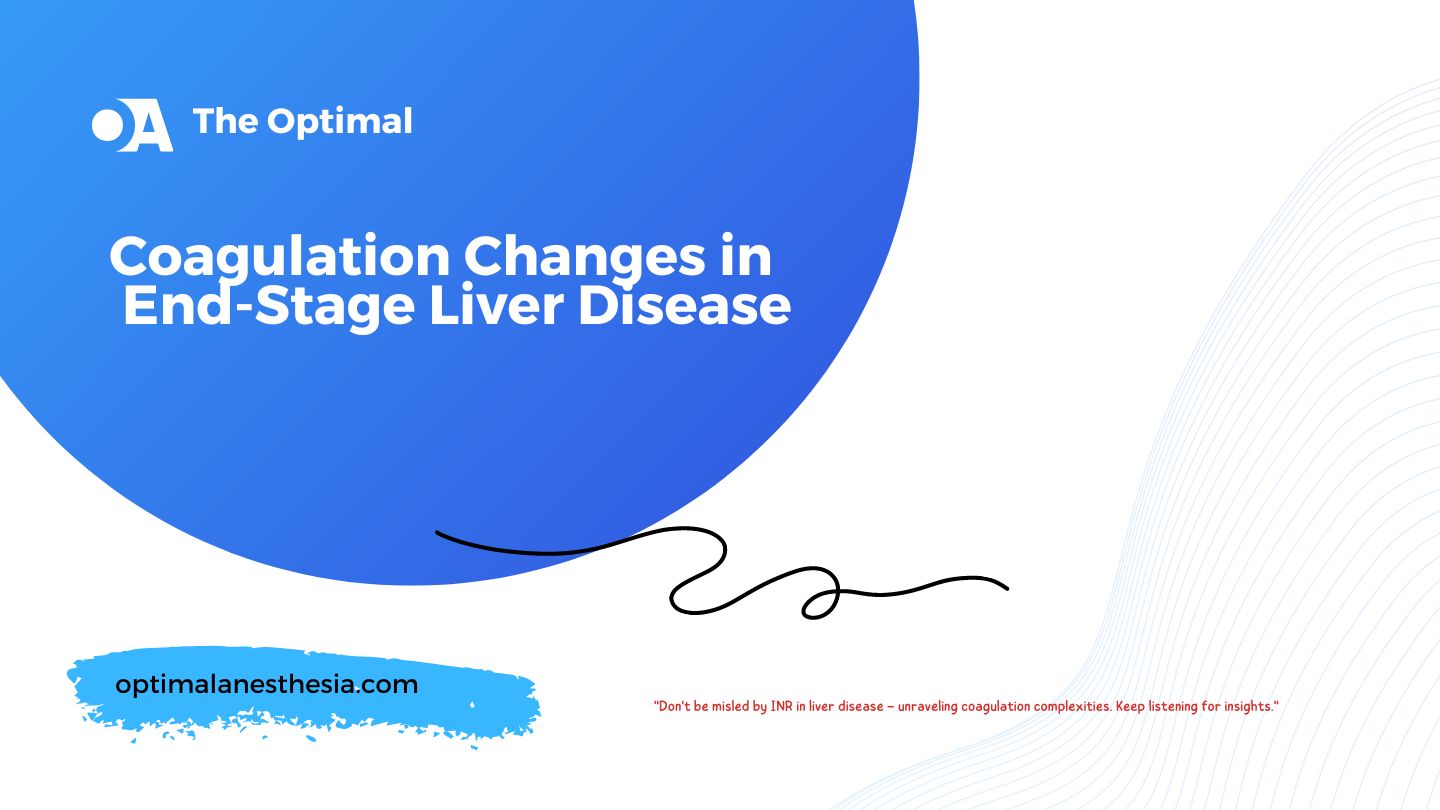Welcome, anesthesia resident! Your breakdown of coagulation changes in End-Stage Liver Disease (ESLD) is fantastic – it’s like a quick guide to understanding a complex plot. Let’s reinforce these concepts:
Team Player Shortage:
- Procoagulant Production Dip: ESLD leads to a shortage of factors II, VII, IX, and X, affecting blood clotting. Keep an eye on INR as it reflects the clotting capability.
- Factor VIII Solo Act: Factor VIII steps up as the lone superhero, compensating for the deficient coagulation factors.
Anticoagulant Factors Take a Hit:
- Vacation for Proteins: Protein C, S, and Antithrombin III, the natural anticoagulants, decide to take a break in ESLD, increasing the risk of blood thickening.
Blood Vessel Wall Backup:
- vWF and FVIII Tag Team: Blood vessel walls contribute by producing more von Willebrand factor (vWF) and Factor VIII (FVIII) to maintain clotting balance.
Tricky Hypercoagulability:
- Thrombin Confusion: ESLD creates a paradox – the blood acts clot-prone, but standard tests may not show it. Thrombomodulin resistance and spleen’s role add complexity.
- Spleen’s Surprise: Despite spleen hoarding platelets, high vWF levels prevent excessive thinning of blood.
Fibrinolytic Flip-Flop:
- Liver’s Slacking Job: The liver neglects its role in breaking down blood clots, leading to a decrease in key players like plasminogen and α2-antiplasmin.
- Backup Team Dynamics: tPA and PAI-1 step in to regulate, creating a seesaw effect. Some patients may be at risk of blood thickening.
Understanding these coagulation changes equips you to navigate the challenges of anesthesia in ESLD patients. It’s a bit like unraveling a mystery – keep digging, and you’ll master the plot twists. Best of luck on your exciting journey in the world of anesthesia!


